
loading
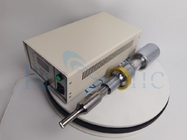

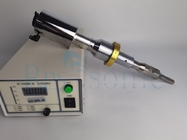

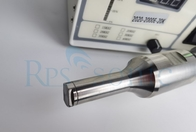

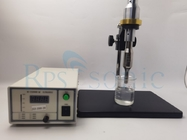

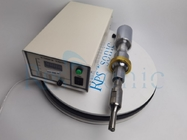

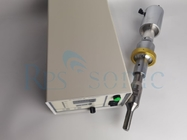

| Quantity: | |
| Place of Origin | China |
|---|---|
| Brand Name | Rps-sonic |
| Certification | CE |
| Model Number | RPS-LP20 |
| Minimum Order Quantity | 1pcs |
| Price | negotiable |
| Packaging Details | CARTON |
| Delivery Time | 1DAYS |
| Payment Terms | T/T |
| Supply Ability | 200PCS/MONTH |
| Frequency | 20Khz | Power | 100-2000w |
|---|---|---|---|
| Horn Material | Titanium | Horn Size | Customized |
| Generator | Digital | Weight | 15kg |
| Package | Wooden | Warranty | One Year |
| High Light | 1500w Ultrasonic Homogenizer,Cell Dispersion Ultrasonic Homogenizer,20Khz Ultrasonic Homogenizer Sonicator | ||
20Khz 1500w Digital Type Lab Ultrasonic Homogenizer Sonicator For Ultrasonic Cell Dispersion
20Khz 1500w Ultrasonic Homogenizer For Ultrasonic dispersion and depolymerization
Parameter
| Model | SONO20-1000 | SONO20-2000 | SONO15-3000 | SONO20-3000 |
| Frequency | 20±0.5 KHz | 20±0.5 KHz | 15±0.5 KHz | 20±0.5 KHz |
| Power | 1000 W | 2000 W | 3000 W | 3000 W |
| Voltage | 220/110V | 220/110V | 220/110V | 220/110V |
| Temperature | 300 ℃ | 300 ℃ | 300 ℃ | 300 ℃ |
| Pressure | 35 MPa | 35 MPa | 35 MPa | 35 MPa |
| Intensity of sound | 20 W/cm² | 40 W/cm² | 60 W/cm² | 60 W/cm² |
| Max Capacity | 10 L/Min | 15 L/Min | 20 L/Min | 20 L/Min |
| Tip Head Material | Titanium Alloy | Titanium Alloy | Titanium Alloy | Titanium Alloy |
Description
An important application of ultrasonic dispersion is to disperse and deaggregate solids in liquids. Ultrasonic dispersion is based on ultrasonic cavitation. It is mainly used to reduce small particles in the liquid to improve the uniformity and stability of the liquid. It is an effective method to reduce soft and hard particles. Ultrasonic dispersion can be easily extended from laboratory-level equipment to industrial production. The process and effect of ultrasonic dispersion in industrial production are the same as laboratory test results.
Traditional decentralization technology
A common method of mixing powders into liquids to prepare various products (such as paints, inks, shampoos, beverages or polishing media). Individual particles are combined together by the attraction of various physical and chemical properties (including van der Waals force and liquid surface tension), and the effect is more obvious for higher viscosity liquids such as polymers or resins. This attraction must be overcome to de-agglomerate and disperse the particles into the liquid medium. The application of mechanical stress can break the agglomeration of the particles while the liquid is pressed between the particles. Different techniques are usually used to disperse the powder in the liquid. This includes high-pressure homogenizers, agitator bead mills, jet impact mills and rotor-stator mixers.
High-intensity ultrasonic dispersion technology is an effective alternative to the above technology. When ultrasonic waves are transmitted into the liquid, the ultrasonic waves in the liquid medium will produce alternating cycles of high pressure (compression) and low pressure (dilution). The mechanical stress is used to attract electrostatic forces (such as van der Waals forces) that use particles to gather together. Ultrasonic cavitation in the liquid causes high-speed liquid jets up to 1000km/h (about 600mph). Such a jet squeezes the liquid at high pressure between the particles and separates them from each other. The smaller particles are accelerated by the liquid jet and collide at high speed. This makes ultrasound an effective means of dispersion and depolymerization, and it is also used for the grinding and fine grinding of micron and sub-micron size particles.
RPS-SONIC provides equipment for single or batch processing of ultrasonic dispersion and depolymerization of any volume.
Experimental-grade ultrasonic dispersion equipment can be used to process liquids with a volume from 1.5 ml to about 2L. Industrial-grade ultrasonic dispersion equipment is used for production and development, and handles liquids with a volume from 0.5L to about 2000L.
Features
1. Easy to expand
Unlike other dispersion technologies, ultrasonic dispersion can be easily expanded from laboratory-level equipment to industrial production, and laboratory testing will allow accurate selection of the required equipment size. When used in the final large-scale production, the ultrasonic dispersion process and effect are the same as the laboratory test results.
2. Easy to clean
Ultrasound is a well-known cleaning application, such as surface, partial cleaning. The intensity of ultrasonic waves used for dispersion applications is much higher than that of typical ultrasonic cleaning. When the wet part of the ultrasonic device is designed to be cleaned, ultrasonic vibration can be used to assist in flushing and cleaning.
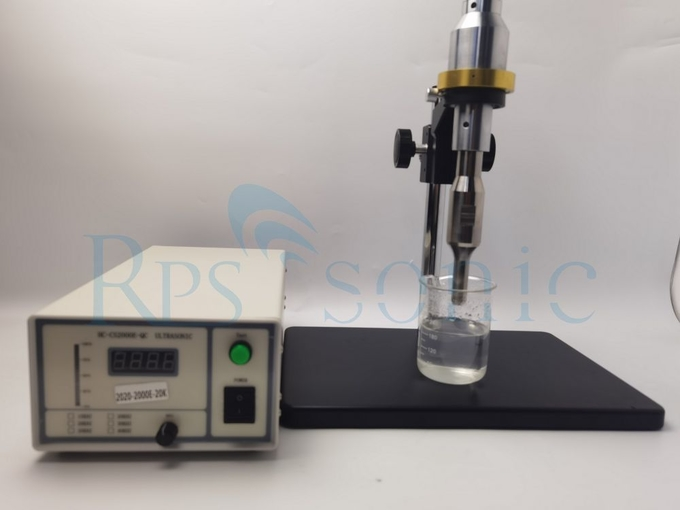
| Frequency | 20Khz | Power | 100-2000w |
|---|---|---|---|
| Horn Material | Titanium | Horn Size | Customized |
| Generator | Digital | Weight | 15kg |
| Package | Wooden | Warranty | One Year |
| High Light | 1500w Ultrasonic Homogenizer,Cell Dispersion Ultrasonic Homogenizer,20Khz Ultrasonic Homogenizer Sonicator | ||
20Khz 1500w Digital Type Lab Ultrasonic Homogenizer Sonicator For Ultrasonic Cell Dispersion
20Khz 1500w Ultrasonic Homogenizer For Ultrasonic dispersion and depolymerization
Parameter
| Model | SONO20-1000 | SONO20-2000 | SONO15-3000 | SONO20-3000 |
| Frequency | 20±0.5 KHz | 20±0.5 KHz | 15±0.5 KHz | 20±0.5 KHz |
| Power | 1000 W | 2000 W | 3000 W | 3000 W |
| Voltage | 220/110V | 220/110V | 220/110V | 220/110V |
| Temperature | 300 ℃ | 300 ℃ | 300 ℃ | 300 ℃ |
| Pressure | 35 MPa | 35 MPa | 35 MPa | 35 MPa |
| Intensity of sound | 20 W/cm² | 40 W/cm² | 60 W/cm² | 60 W/cm² |
| Max Capacity | 10 L/Min | 15 L/Min | 20 L/Min | 20 L/Min |
| Tip Head Material | Titanium Alloy | Titanium Alloy | Titanium Alloy | Titanium Alloy |
Description
An important application of ultrasonic dispersion is to disperse and deaggregate solids in liquids. Ultrasonic dispersion is based on ultrasonic cavitation. It is mainly used to reduce small particles in the liquid to improve the uniformity and stability of the liquid. It is an effective method to reduce soft and hard particles. Ultrasonic dispersion can be easily extended from laboratory-level equipment to industrial production. The process and effect of ultrasonic dispersion in industrial production are the same as laboratory test results.
Traditional decentralization technology
A common method of mixing powders into liquids to prepare various products (such as paints, inks, shampoos, beverages or polishing media). Individual particles are combined together by the attraction of various physical and chemical properties (including van der Waals force and liquid surface tension), and the effect is more obvious for higher viscosity liquids such as polymers or resins. This attraction must be overcome to de-agglomerate and disperse the particles into the liquid medium. The application of mechanical stress can break the agglomeration of the particles while the liquid is pressed between the particles. Different techniques are usually used to disperse the powder in the liquid. This includes high-pressure homogenizers, agitator bead mills, jet impact mills and rotor-stator mixers.
High-intensity ultrasonic dispersion technology is an effective alternative to the above technology. When ultrasonic waves are transmitted into the liquid, the ultrasonic waves in the liquid medium will produce alternating cycles of high pressure (compression) and low pressure (dilution). The mechanical stress is used to attract electrostatic forces (such as van der Waals forces) that use particles to gather together. Ultrasonic cavitation in the liquid causes high-speed liquid jets up to 1000km/h (about 600mph). Such a jet squeezes the liquid at high pressure between the particles and separates them from each other. The smaller particles are accelerated by the liquid jet and collide at high speed. This makes ultrasound an effective means of dispersion and depolymerization, and it is also used for the grinding and fine grinding of micron and sub-micron size particles.
RPS-SONIC provides equipment for single or batch processing of ultrasonic dispersion and depolymerization of any volume.
Experimental-grade ultrasonic dispersion equipment can be used to process liquids with a volume from 1.5 ml to about 2L. Industrial-grade ultrasonic dispersion equipment is used for production and development, and handles liquids with a volume from 0.5L to about 2000L.
Features
1. Easy to expand
Unlike other dispersion technologies, ultrasonic dispersion can be easily expanded from laboratory-level equipment to industrial production, and laboratory testing will allow accurate selection of the required equipment size. When used in the final large-scale production, the ultrasonic dispersion process and effect are the same as the laboratory test results.
2. Easy to clean
Ultrasound is a well-known cleaning application, such as surface, partial cleaning. The intensity of ultrasonic waves used for dispersion applications is much higher than that of typical ultrasonic cleaning. When the wet part of the ultrasonic device is designed to be cleaned, ultrasonic vibration can be used to assist in flushing and cleaning.









Ultrasonic Welding Equipment Ultrasonic Welding Transducer Ultrasonic Welding Converter Ultrasonic Liquid Processor Ultrasonic Cutting Equipment Ultrasonic Spray Nozzles Ultrasonic Power Supply Ultrasonic Soldering Equipment Ultrasonic Welding Horn Ultrasonic Assisted Machining Ultrasonic Testing Equipment
content is empty!